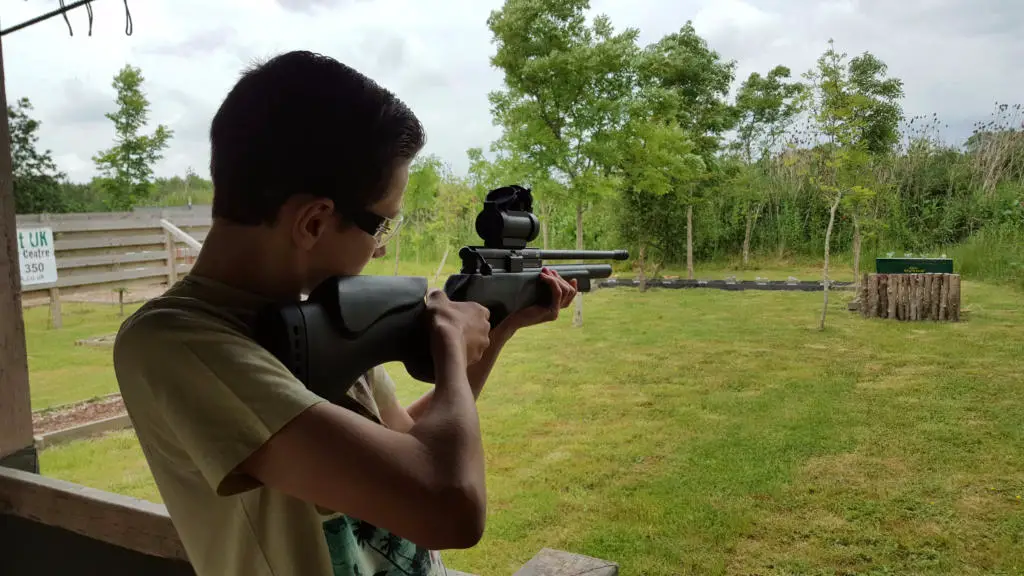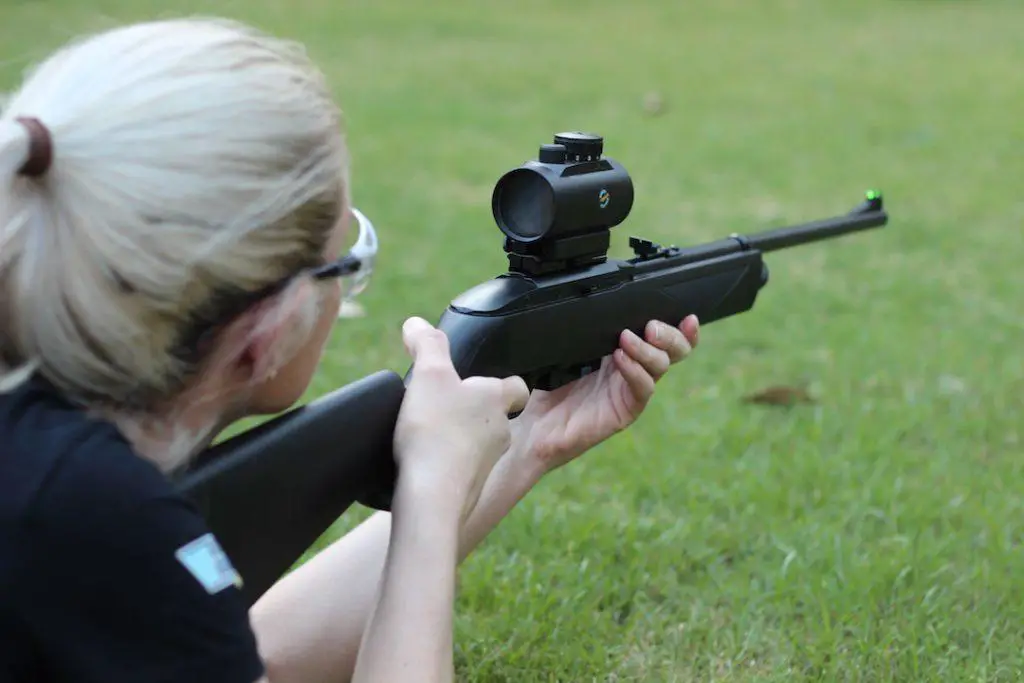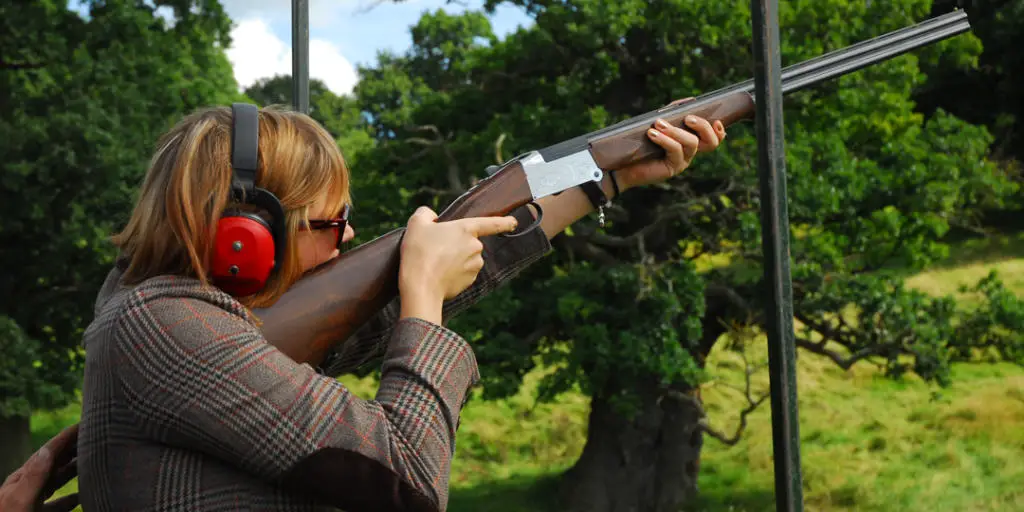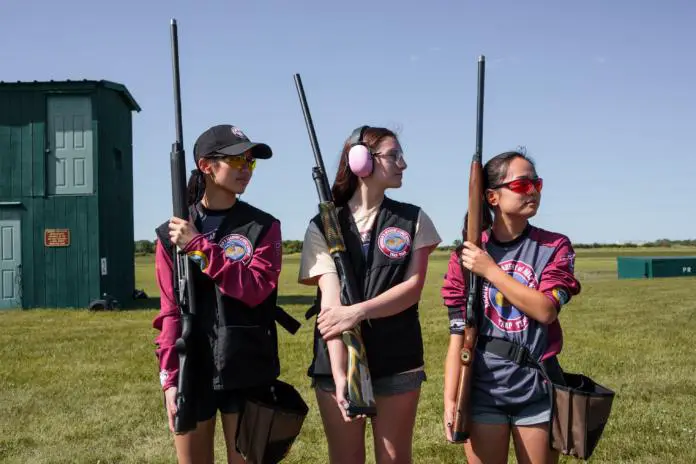If you have already become a happy owner of a pneumatic gun or are just about to become one, this article about handling weapons safely is for you. Remember that any gun is not a toy, and you should follow a number of rules regarding the installation and removal of the tank, loading, and unloading of the gun, handling and taking care of the guns.

Do not demonstrate the gun in a large crowd of people, as this may mislead those around you, and they may mistake it for a firearm. Be sure to read all instructions before using a gun and remember that you must follow all of them (handling & possession). 90% of all accidents with air guns are due to careless handling, the perception that a gun is not loaded when it actually is and aiming it at an inappropriate target. All these cases can be avoided if a shooter handles a weapon responsibly and correctly.
General Precautions
1. Handle the gun as if it is loaded, just like you would handle a firearm .
2. Always aim in and keep the barrel pointing in a safe direction. Choose only a target that cannot be shot through and make sure that pellets will not bounce off it because of its hard surface. Never shoot into water even if you are in your own backyard.. Never point your gun at people or animals, or anything else that you are not going to shoot.

3. Keep your grip safety activated until you are ready to shoot. Do not pull the trigger when the grip safety activated (a pellet can get stuck in the barrel). As in any mechanical devices, the grip may fail. Even when the grip safety is activated, handle it with caution. Never point the gun at anyone or at anything you do not want to shoot.
4. When you take the gun from someone or from a safe, check if it’s discharged and the grip safety is activated.
5. Do not touch the trigger until you are ready to shoot.
6. Use special goggles while shooting.
7. If you wear eyeglasses, put the goggles on top of those.
8. Always use .177 (4.5) caliber pellets.
9. Never reuse pellets.
10. Keep the trigger, if any, locked when storing.
11. Keep your gun in a safe place at your house without pellets and CO2 cylinders.
12. Before storing the gun, make sure it is discharged and secured.
13. Do not forget that any repair of the gun is carried out only in special workshops.

14. Never let a loaded gun out of your hand.
15. An air gun, together with its instructions, may only be handed over to persons over 18 y/o and familiar with the principles of handling weapons.
16. Do not modify your gun. Changes may not be compatible with the design of the gun and will be contrary to these instructions. The use of such weapons can cause serious injury or death. It will also void the warranty on the gun.
17. If you have dropped your gun, inspect and check it carefully before using it again. If something changes, like the stroke of the trigger, it could mean damage to or destruction of parts of the gun. If this happens, contact a service department.
CO2 Cylinder Installation and Removal
Keep your hands and face out away from vaporizing CO2 gas. If the gas gets into contact with the skin, it can cause rapid cooling and frostbite. Before removing the cylinder from the air gun, make sure that the CO2 cylinder is empty. Slowly turn the cap counterclockwise until the noise of the vaporizing CO2 gas stops.

When installing and removing the CO2 cylinder:
- Make sure that the air gun is not loaded and its grip safety is activated.
- Slowly turn the cap counterclockwise until the noise of vaporizing CO2 gas stops. Make sure it’s all out.
- Open the tube lid and remove the empty CO2 cylinder with the air gun barrel pointing down.
- Insert a new cylinder/cartridge into the air gun mag with the neck facing forward.
- Screw in the gas cylinder cap.
- Point the air gun in a safe direction, remove the safety catch and pull the trigger.
- If the air gun does not pop after pulling the trigger, the cylinder has not been pierced. Slightly screw the cap, slingshot the slide, and fire again until the pops are heard, it means that gas is released each time the trigger is pulled.
- Check the grip safety.
Do not store your air gun with the cylinder inside.
Important: The CO2 cylinder may explode at temperatures above 50°C. Do not deform or burn cylinders. Do not heat or store them at temperatures above 50C°.
Pellets Loading and Removal
Always use .177 (4.5) caliber diabolo pellets with a maximum length of 6.5 mm when firing air guns. Do not use BB (metal balls), darts, or other unsuitable projectiles for rifled barrels. The use of non-standard bullets may cause damage to you or your gun. Never reuse bullets.
Loading the pellets:
- Check the grip safety.
- Point the gun in a safe direction.
- Follow the instructions of your air gun to load the pellets.
- Before shooting, make sure that the slide is pushed forward and locked.
Discharge by shooting is the easiest way to remove a pellet. Shoot in a safe direction.

Discharge without shooting:
- Activate grip safety.
- Remove the CO2 cylinder.
- Pull the slide back and open the barrel.
- Insert a suitable size brush into the barrel. The barrel may be damaged if you use an incorrectly sized brush.
- Push the pellet into the pellet ejection port direction.
If a pellet does not come out of the gun, it does not mean that there are no more of them in the mag. Shooting with insufficient CO2 pressure may cause a pellet to stuck in the barrel. If it is not possible to make a shot, it could be due to a dud caused by a pellet.
Handling
Before cleaning your air gun (grip safety) make sure there is no pellet in the barrel and remove the CO2 cylinder. The external metal parts of the gun should be cleaned from time to time. Use a soft cloth and gun oil for this purpose. The gun must be lubricated regularly after every 250 shots in order to function properly and avoid corrosion. Apply 2 to 3 drops of gun oil on external parts and inside the compression chamber. Use only airgun-rated oils. With proper care and proper handling, your gun will bring you pleasure for many years.
Author bio: Roy Emerson is a technology enthusiast, a loving father of twins, a programmer in a custom software company. Editor in chief of TheHomeDweller blog, greedy reader, and gardener.
















































